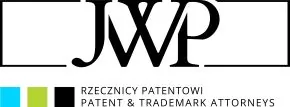In this case study of a complex dispute between a Polish enterprise and a US corporation, we share our knowledge and describe the key aspects of a successful strategy for how to proceed. Exclusive rights can be contested unjustifiably, and it is important to know how to defend yourself in such a situation and how to ensure good relations with competitors for the future. The case presented concerned a trademark, being the main brand symbol of our client.
Who was involved in the dispute?
Our client, Adam Betlewski, who runs a family business under the Betlewski brand, produces classic-line leather goods. Superior quality products for men and women, such as wallets, bags and belts, have contributed to the company's established position on the Polish market. The company attaches particular importance to the image and recognisability of its trademarks, which distinguish the goods it offers and symbolise their high quality and standards.
The opposing party is a large, recognisable US corporation that offers footwear, apparel and accessories globally.
What was the challenge we faced?
As many as four proceedings were initiated against our client before the Patent Office of the Republic of Poland and the European Union Intellectual Property Office (EUIPO) by the US corporation. To our client, the case was bound to be lost. To an experienced attorney, however, these types of proceedings are challenges that are a daily part of professional practice. From our previous experience, we were convinced that the case had a chance of a positive outcome for our client.
All four cases were related to the same market activity and the use of the same word and figurative marks of our client, the differences were mainly about territorial coverage.
The first proceedings initiated was an opposition filed on 4
December 2020 against the word and figurative mark EUTM.018258868
"BETLEWSKI" ![]() filed on 23 June 2020 for goods and services
related to the broad category of footwear and leather clothing, as
well as accessories. The opposition was based on the prior rights
to the trademarks of a well-known international brand.
filed on 23 June 2020 for goods and services
related to the broad category of footwear and leather clothing, as
well as accessories. The opposition was based on the prior rights
to the trademarks of a well-known international brand.
Further opposition proceedings pending at the Patent Office of
the Republic of Poland between the same parties were oppositions
filed on 23 February 2021 and 12 April 2021 against national
trademarks: word and figurative Z.519144 "Betlewski"  and word and figurative Z.517197
"Betlewski Home and Garden"
and word and figurative Z.517197
"Betlewski Home and Garden"  filed for leather goods, as well as other
accessories and home and garden products.
filed for leather goods, as well as other
accessories and home and garden products.
At the same time, proceedings were pending at the Patent Office
of the Republic of Poland following a request filed on 16 February
2022 for the invalidation of the protective right for the word and
figurative mark R. 295014 "BETLEWSKI"  registered on 16 February 2017 for goods
related to the broad category of footwear, clothing, leather goods,
as well as jewellery and products made of noble metals and
gemstones.
registered on 16 February 2017 for goods
related to the broad category of footwear, clothing, leather goods,
as well as jewellery and products made of noble metals and
gemstones.
The other party's argumentation was based on its rights in earlier trademarks and a confusing similarity in the sense of industrial property law.
Good to know!
- One of the key challenges in this type of case is gathering good evidence. The evidence must relate strictly to the trademarks in question.
- The Office has very strict formal requirements. The evidence must originate from a specific period of time and be presented appropriately, e.g. in the tables and file extensions indicated by the Office.
- You do not give all the evidence you have or rely on assumptions.
- When you have a large portfolio of trademarks, it is important that you look at whether all of them are used. If this is not the case, some of the evidence may be undermined, giving an advantage to the opposing party right at the beginning of the proceedings.
- An important consideration in this type of cases is renown. You should verify that the opposing party's trademark is not a renowned mark. This has a significant impact on the strategy for proceedings.
We asked our client to provide us with as many documents as possible (indicating which materials and evidence of use we specifically needed) and then conducted a thorough analysis, selecting those that gave us the best chance of succeeding in the case. Additionally, we conducted our own searches for evidence on the Internet and in brick-and-mortar shops to guide the client in gathering the evidence that would be best for the case. This approach is time-consuming, but always yields good results.
We based our strategy on a thorough analysis of litigation cases that had taken place around the world. To this end, we conducted a search using specialised databases. From previous proceedings, we wanted to see how our opponent approached this type of cases. This allowed us to learn about the decisions of previous offices and the weaknesses of previous proceedings and evidence given. Through a detailed analysis, we gained knowledge that we used in the proceedings.
In our case, the basis for the opposition was the word and figurative trademark, although what was really at issue was the similarity of the graphic itself. The word element was completely dissimilar and it was on this element that the recognisability of the trademark was based. What was at the heart of the dispute was the figurative element. We therefore had to demonstrate that this element is used exclusively with the word and not as an independent figurative mark. With this approach, most of the opposing party's evidence was immediately rendered irrelevant as it related to the word and figurative mark. We came up with the idea for this type of tactics by analysing the previous disputes that this company had brought. We noticed that this was a recurring aspect. In cases of this type, the opposing party had usually relied on evidence for the use of a word and figurative mark rather than a figurative mark.
What effect did we achieve?
Having gathered the evidence in the case, the European Union Intellectual Property Office (EUIPO) issued a decision on 26 January 2023 dismissing the opposition in its entirety. It argued that there is no confusing similarity between the earlier marks and the mark in question within the meaning of the industrial property law provision, nor is there identity or similarity with the allegedly renowned trademark. Thus, the Office, when comparing the disputed marks, did not find any similarity to an extent that would make it impossible for the disputed marks to coexist in the same market. In the view of the EUIPO, the indicated differences between the marks can keep a sufficient distance between the overall impressions conveyed by the marks. For these reasons, the Office found it unlikely that a given consumer, who is considered to be reasonably well-informed, observant and cautious, could believe that goods and services presumed to be identical come from the same economically connected undertaking or undertakings.
This ruling was our success but it did not mean the end of the problems for our client, as there were still three proceedings ahead of us in Poland concerning the same market activity and the use of the same marks. In their efforts to ensure that the strength of their trademarks is not diluted, corporate companies managing global brands usually fight to the bitter end in such proceedings, and allocate significant financial resources to the cause. We were aware that this would probably also be true in our case. Our client, being the leader in the Polish market, was also potentially able to commit adequate financial resources to pursue further proceedings. Given our win before the EUIPO, there was a significant chance of success also in subsequent cases. This time, however, we suggested a different strategy for action, one that, from our perspective, was more favourable to the client for both financial and business reasons.
We decided to take advantage of the fact that we had won the EUIPO proceedings, which gave us a major negotiating advantage. We approached the remaining three proceedings as a whole by signing settlements with the opposing party, thus ending all three remaining cases.
Settlement has the advantage that, unlike in proceedings where you are limited by the scope of the requests, it allows the parties to agree on additional issues beyond what is at the heart of the problem. It is also an opportunity to write down additional elements on how the two companies are to continue to operate in the market and to slightly expand the arrangements and commitments between the parties. In the case of a dispute with such a large entity, it is worth doing so to reduce the risk of further disputes in the future. The fact that the settlement ended the remaining proceedings at a unanimous request of both parties, thus minimising our client's costs, is also a major plus. The cost of three proceedings before the offices would have undeniably been significantly higher, even if there had been a win waiting at the end.
Following negotiations and having agreed on terms, the parties reached a settlement as to the coexistence of the trademarks in the market. Under its terms, our client is entitled to use trademark "BETLEWSKI" Z.519144 for the following categories of goods: footwear, clothing, footwear care products. Furthermore, the other party waived and undertook not to raise any claims that might arise from the past use of the trademarks covered by the settlement. Accordingly, they filed requests to withdraw the oppositions and the request for invalidation of the trademark. Subsequently, the Office issued final decisions terminating the pending proceedings, as a result of which the trademarks belonging to and applied for by our client were registered. As a result, our client's right to "BETLEWSKI" trademark which they had developed over the years was fully confirmed.
Conclusions from the case
The above demonstrated success shows that a proper strategy for handling a multi-level dispute and fighting for the protection of industrial property rights brings good results. Although the case raised doubts at the first moment, it was worth examining it carefully; with commitment and determination, there is always a chance to find the nuances that will lead you to victory, regardless of the opponent's background, reputation and considerable claims.
This is our strength, our experience and our strategic way of doing things based on a sound and insightful analysis of data and an out-of-the-box approach to our clients' cases.
It is good to remember that success can be achieved not only by winning disputes or court proceedings. Well-prepared settlements are often a better solution, as they allow both parties to the dispute to further develop their business and can sometimes even lead to a mutually beneficial cooperation.
The content of this article is intended to provide a general guide to the subject matter. Specialist advice should be sought about your specific circumstances.

